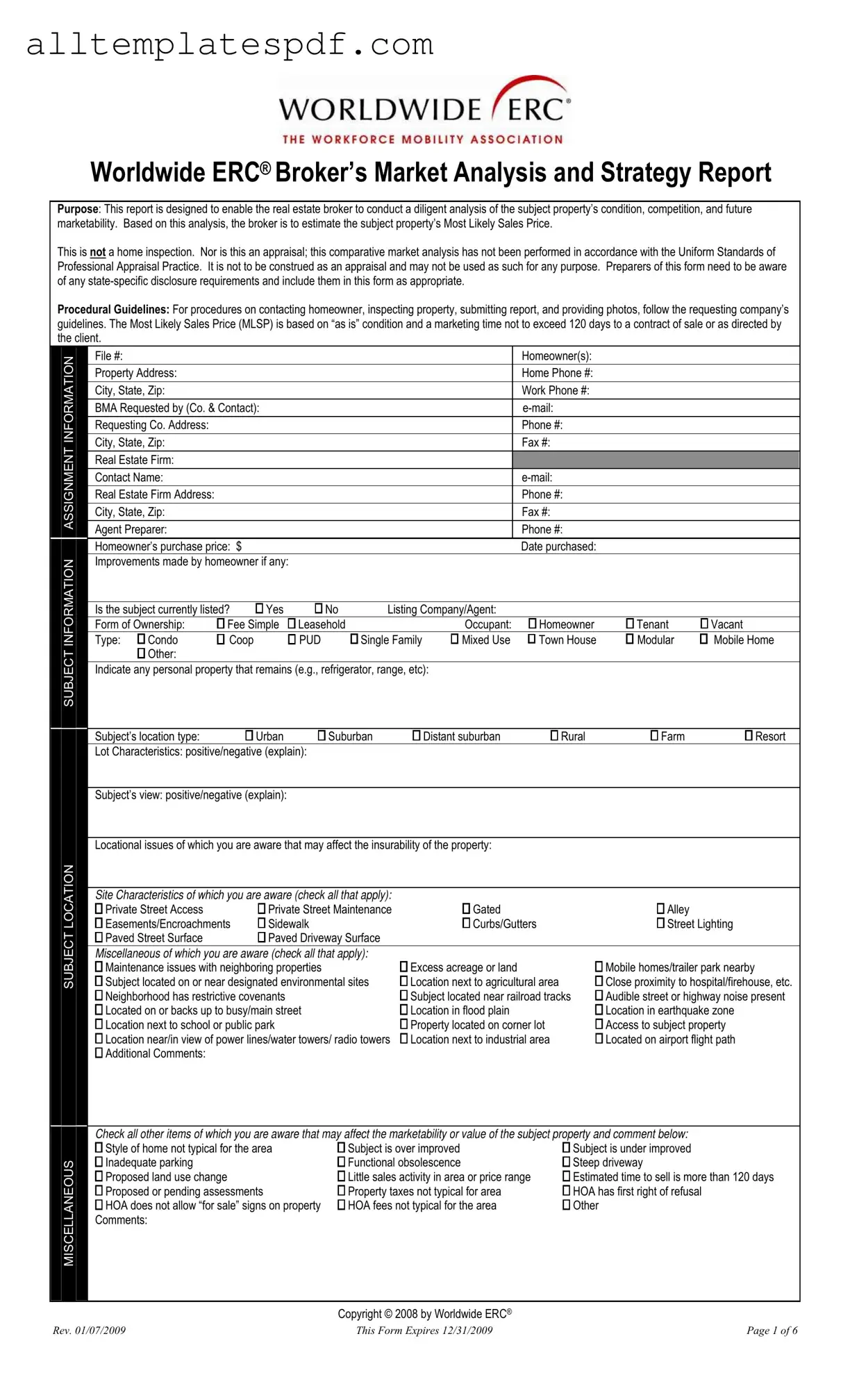Filling out the ERC Broker Market Analysis form can be a complex task, and several common mistakes can lead to inaccurate assessments. One significant error is failing to provide complete contact information. Missing details such as the homeowner's phone number or the real estate firm's address can hinder communication and delay the process. Always ensure that every required field is filled out accurately to avoid complications.
Another frequent mistake is neglecting to disclose critical property condition issues. When brokers overlook aspects like water damage or structural concerns, they risk underestimating the property's value. This oversight can mislead potential buyers and affect the overall market analysis. It’s essential to be thorough and transparent about any issues observed during the property inspection.
Inaccuracies in estimating the Most Likely Sales Price (MLSP) also pose a challenge. Brokers sometimes base their estimates on outdated data or insufficient market analysis. This can lead to unrealistic pricing, which may deter buyers or result in prolonged market times. Utilizing current market trends and comparable sales data is vital to arrive at a more accurate estimate.
Another common pitfall is not considering the neighborhood context. Brokers may fail to analyze surrounding properties and their impact on the subject property’s value. Factors like local amenities, school districts, and community developments can significantly influence marketability. A comprehensive understanding of the neighborhood can enhance the analysis.
Additionally, brokers often forget to check all relevant boxes related to property characteristics. Missing information about the property's type, condition, or unique features can lead to an incomplete analysis. Each detail contributes to a clearer picture of the property’s market position, so it’s crucial to be meticulous in this section.
Lastly, overlooking state-specific disclosure requirements can create legal issues down the line. Each state has unique regulations that must be adhered to when completing the form. Failing to include necessary disclosures can lead to liability concerns and undermine the credibility of the market analysis. Always stay informed about the local laws to ensure compliance.
